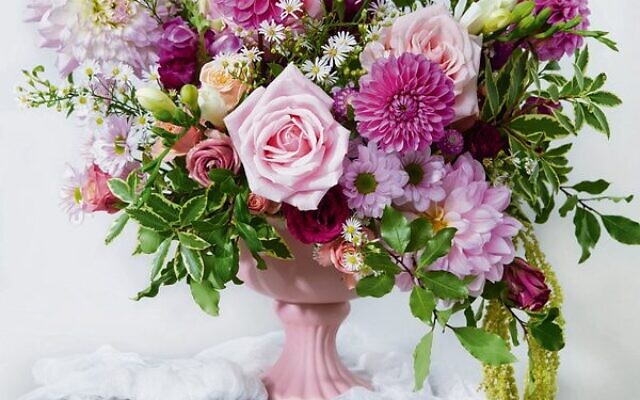Floral beauty, with a sustainability focus
Helping Flowers by Julia G stand out from other chain florists is the personalised experience that Julia and her team brings, where broader factors are considered when creating the vision of the final piece.
Is it possible to be environmentally conscious when picking out the flowers for your wedding? What if you’re just buying a bouquet for your mother?
For Julia Glass, director and head florist of Flowers by Julia G, sustainability is one of the most important factors when she is engaging with the art of floristry, whether it’s for an event or a gift.
Following her passion for flowers and beautiful colours during her maternity leave in 2020, Glass opened her floristry business to create vibrant and textured floral designs for clients, while promoting a sustainably-conscious relationship with flowers.
“We love to be as sustainable as possible, so that involves recycling green waste and soft plastic waste, using sustainable packaging through our bouquet wrapping, minimising floral foam use, and using as many locally-grown flowers as possible,” said Glass.
“It’s not something you think could be sustainable, but its become a big movement to be more sustainable in floristry. For example, instead of using green floral foam that can break down into a micro plastic, we’re opting for materials such as chicken wire and other objects that can hold flowers together that are more environmentally friendly.”
A trusting relationship
Helping Flowers by Julia G stand out from other chain florists is the personalised experience that Julia and her team brings, where broader factors are considered when creating the vision of the final piece. For Julia, the key to creating memorable bouquets and arrangements is by pursuing flowers of vibrant colours to work with clients’ colour palettes, and by fostering a client-focused experience.
“I love talking to clients about what they have in mind. Sometimes clients don’t have a concrete idea of what they’re after, so I come to them with a range of imagery. I like people to bring what inspires them, and we also look into what flowers are in season at that time, so that we can maximise the budget and the look for the event,” Glass remarked.
“One thing that clients need to be conscious of is all the flooding happening at the moment, and all the environmental factors that are affecting flowers. When clients trust that you understand their brief and that you’ll adopt their vision, it may not be the exact same flowers that they have in mind, but they still trust that you will make the appropriate tweaks to work around those factors.”
An environmentally-conscious approach
According to Glass, emerging floral design trends additionally point to environmental awareness as a tool for creating beautiful and impactful floral experiences.
Glass points out that older trends such as blending in fruits with bunches of flowers are starting to re-emerge. Another way people can achieve a memorable effect is through having bigger floral art installations, such as cascading flowers along a staircase bannister, or using large flower pieces more than once.
“By creating something big and then having smaller centrepieces where the large installation is the bigger focus seems to be a trend that’s on the rise. Part of the sustainability movement is thinking about how we can extend the longevity or usability of the flowers. For example, if we have an arbour for a wedding ceremony, how can we then use it for the reception, so we get two uses out of the beautiful flowers rather than using them once? It’s a great way to have a positive impact on your guests through fresh flowers that connect people with their environment.”
Julia Glass and her team at Flowers by Julia G can be contacted on 0432 315 229. For more information, visit flowersbyjuliag.com.au or on Instagram @flowersbyjuliag.


comments